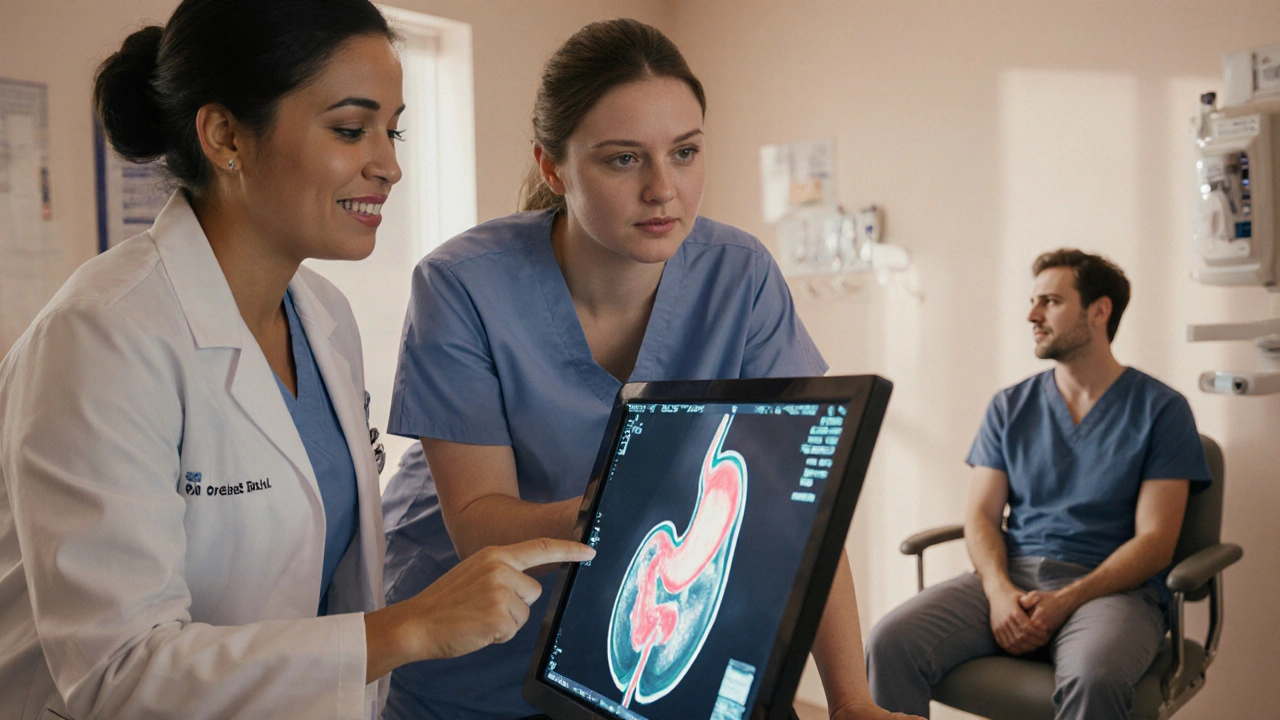Gastroparesis Treatment: Meds, Diet & Lifestyle Guide
When dealing with Gastroparesis Treatment, a therapeutic approach aimed at improving stomach emptying and relieving symptoms. Also known as gastroparesis management, it targets the delayed gastric emptying that defines the condition. This approach often requires Prokinetic Drugs, medications that stimulate stomach muscle contractions to move food faster, plus careful Dietary Management, adjustments in meal size, composition and timing. When diabetes is the underlying cause, you’re looking at Diabetes‑Related Gastroparesis, a form triggered by nerve damage from high blood sugar, which adds glucose control into the treatment mix. In short, gastroparesis treatment blends medication, nutrition and disease management to restore normal digestion.
Medication choices start with prokinetics such as metoclopramide, domperidone or erythromycin. These drugs work by binding to serotonin receptors or motilin pathways, which directly boost the stomach’s contractility. Anti‑nausea agents like ondansetron can be added when vomiting is severe. For patients who don’t respond to pills, gastric electrical stimulation offers a device‑based option that sends low‑level pulses to the stomach wall, improving motility over time. Each option comes with its own risk profile, so doctors weigh benefits against side effects like fatigue, cramps or, in rare cases, cardiac issues.
Dietary tweaks are equally critical. The goal is to reduce the workload on the stomach while still delivering enough calories and nutrients. Small, low‑fat meals eaten every two to three hours prevent the stomach from becoming overloaded. Pureed or soft foods, such as oatmeal, smoothies and well‑cooked vegetables, pass through more easily. Staying hydrated, but avoiding large fluid volumes with meals, helps keep the gastric lining moist without slowing emptying. Some patients find success with nutritional supplements like high‑calorie protein powders or vitamin‑rich shakes to meet their needs when solid food intake is limited.
Key Considerations for Successful Management
Before any therapy starts, a proper diagnosis is essential. Gastric emptying studies, often using a radioactive meal, quantify how long food stays in the stomach. Results guide the choice of prokinetic strength and the need for adjunct treatments. Monitoring blood sugar is vital for diabetes‑related cases; tighter glucose control can slow nerve damage and improve motility indirectly. Regular follow‑up appointments let clinicians adjust medication doses, assess nutritional status, and catch potential complications early, such as malnutrition or medication‑induced movement disorders.
Putting all these pieces together creates a personalized plan that tackles the root causes and the symptoms of gastroparesis. Below you’ll find a curated list of articles that dive deeper into each aspect—whether you’re curious about the latest prokinetic options, looking for practical meal‑planning tips, or need guidance on managing gastroparesis alongside diabetes. These resources will help you turn the information into action and improve day‑to‑day comfort.
Diabetic Gastroparesis: The Role of Gastroenterologists and Endocrinologists
Learn how gastroenterologists and endocrinologists diagnose and treat diabetic gastroparesis, covering symptoms, tests and coordinated care tips.

